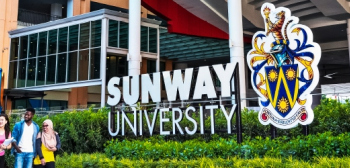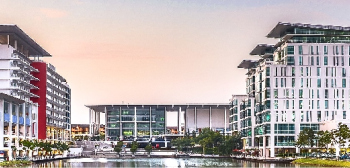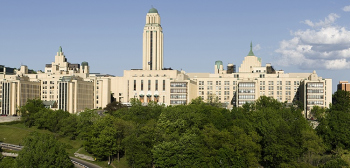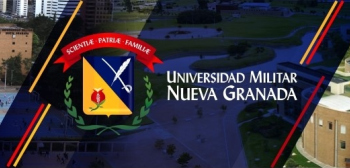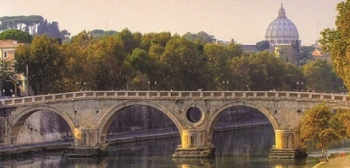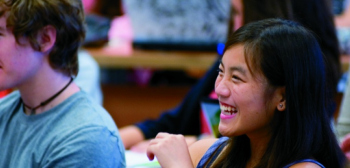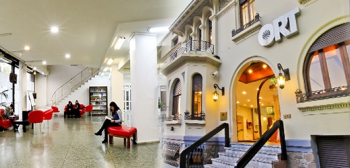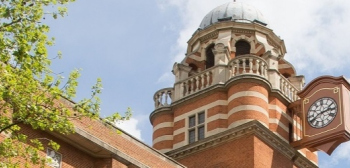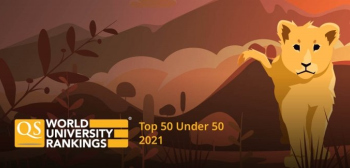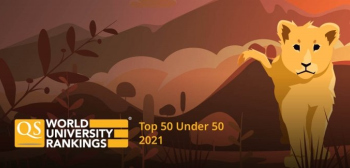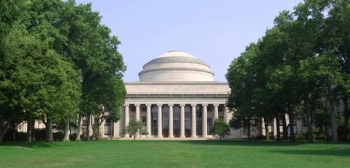马来西亚工艺大学(UTM)
About
A Technical School began its operation at Weld Road, Kuala Lumpur in 1904 to teach Technical Assistants for the Federated Malay States Departments of Railways, Survey and Public Works. In 1941, the Technical School was elevated to a college status and in 1955, The Technical College was formed and officially opened by the British High Commisioner, Sir Donald MacGillivary. In its early years, the Technical College conducted engineering courses at diploma level in Civil Engineering, Mechanical Engineering, Electrical and Radio Engineering, Land Surveying, Building Architecture and Quantity Surveying. A specialised course in Automobile Engineering was offered for the transportation enforcement officers.
In 1960, the Technical College upgraded its engineering courses to the Baccalaureate level, where students following the courses had the opportunities to sit for professional examinations conducted by the Institution of Civil Engineers, the Institution of Mechanical Engineers, the Royal Institute of British Architects and Royal Institute of Chartered Surveyors, UK. In 1972, theTechnical College was officially upgraded to university status with the name Institut Teknologi Kebangsaan (National Institute of Technology). Later, in 1975, the Institute was renamed as Universiti Teknologi Malaysia (UTM).
Today, UTM has two campuses. Its 1222-hectare main campus is located in Skudai, Johor Bahru, a technologically rich and culturally vibrant area in southern-most part of Malaysia. It is also strategically located in the Iskandar Development Region (IDR) which is to be a special economic growth centre of South Johor, apart from being the southern conurbation of Peninsular Malaysia. Its older 18-hectare branch city campus is situated at Jalan Semarak, in the capital Kuala Lumpur.
Currently, UTM has 10 faculties offering undergraduate and postgraduate courses at Faculty of Built Environment, Faculty of Civil Engineering, Faculty of Chemical & Natural Resources Engineering, Faculty of Electrical Engineering, Faculty of Mechanical Engineering, Faculty of Geoinformation Science & Engineering, Faculty of Computer Science & Information Systems, Faculty of Science, Faculty of Education, and Faculty of Management & Human Resources Development. This year UTM has formed two new faculties, namely the Faculty of Bioscience & Bioengineering, and the Faculty of Biomedical & Allied Sciences. Currently there are about 17,500 full-time undergraduate students and 3,200 postgraduate students studying at UTM. The University comprises 2,172 full-time academic staff and 2,385 supporting staff. Having produced around 200,000 technical graduates and qualified professionals over the years, UTM has earned its place as Malaysia's Premier University in Engineering and Technology.
Â
About
A Technical School began its operation at Weld Road, Kuala Lumpur in 1904 to teach Technical Assistants for the Federated Malay States Departments of Railways, Survey and Public Works. In 1941, the Technical School was elevated to a college status and in 1955, The Technical College was formed and officially opened by the British High Commisioner, Sir Donald MacGillivary. In its early years, the Technical College conducted engineering courses at diploma level in Civil Engineering, Mechanical Engineering, Electrical and Radio Engineering, Land Surveying, Building Architecture and Quantity Surveying. A specialised course in Automobile Engineering was offered for the transportation enforcement officers.
In 1960, the Technical College upgraded its engineering courses to the Baccalaureate level, where students following the courses had the opportunities to sit for professional examinations conducted by the Institution of Civil Engineers, the Institution of Mechanical Engineers, the Royal Institute of British Architects and Royal Institute of Chartered Surveyors, UK. In 1972, theTechnical College was officially upgraded to university status with the name Institut Teknologi Kebangsaan (National Institute of Technology). Later, in 1975, the Institute was renamed as Universiti Teknologi Malaysia (UTM).
Today, UTM has two campuses. Its 1222-hectare main campus is located in Skudai, Johor Bahru, a technologically rich and culturally vibrant area in southern-most part of Malaysia. It is also strategically located in the Iskandar Development Region (IDR) which is to be a special economic growth centre of South Johor, apart from being the southern conurbation of Peninsular Malaysia. Its older 18-hectare branch city campus is situated at Jalan Semarak, in the capital Kuala Lumpur.
Currently, UTM has 10 faculties offering undergraduate and postgraduate courses at Faculty of Built Environment, Faculty of Civil Engineering, Faculty of Chemical & Natural Resources Engineering, Faculty of Electrical Engineering, Faculty of Mechanical Engineering, Faculty of Geoinformation Science & Engineering, Faculty of Computer Science & Information Systems, Faculty of Science, Faculty of Education, and Faculty of Management & Human Resources Development. This year UTM has formed two new faculties, namely the Faculty of Bioscience & Bioengineering, and the Faculty of Biomedical & Allied Sciences. Currently there are about 17,500 full-time undergraduate students and 3,200 postgraduate students studying at UTM. The University comprises 2,172 full-time academic staff and 2,385 supporting staff. Having produced around 200,000 technical graduates and qualified professionals over the years, UTM has earned its place as Malaysia's Premier University in Engineering and Technology.
Â
University highlights
- 2012#358
- 2014#=355
- 2015#=294
- 2016#=303
- 2017#=288
- 2018#253
- 2019#228
- 2020#=217
- 2021#=187
- 2022#=191
- 2023#=203
- 2024#188
- 2025#=181
- 2026#=153
Campus locations
UNIVERSITI TEKNOLOGI MALAYSIA JOHOR BAHRU,
UNIVERSITI TEKNOLOGI MALAYSIA , Skudai , Johor Darul Takzim , Malaysia , 81310
Similar Universities
Universidad Militar Nueva Granada
Carrera 11 No. 101 80, Bogotá D.C.
John Cabot University
Via della Lungara 233, Rome
艾塞德商学院
Av. Pedralbes, 60-62, Barcelona
乌拉圭大学
Cuareim 1451, Montevideo
Related content

The Best Lunches for Under A…
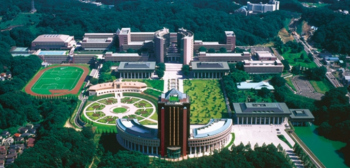
Top Universities in Asia for…




